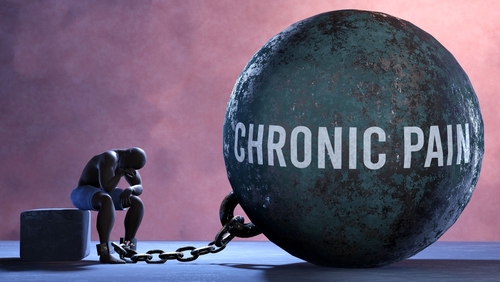
Feb 29, 2024 / Physical Wellness
Chronic pain issues which occur in individuals following a Traumatic Brain Injury can be debilitating. Depending on the location and intensity of the pain, it may interfere with the TBI recovery process and individual’s overall quality of life. Also, the longevity of the pain will be a key determent in the overall impact it will have; acute pain is usually defined and improves as physical injuries improve and chronic pain may be “on” and “off” or continuous. Chronic pain can be persistent and despite treatment, it frequently worsens, instead of improving. At times, the chronic pain is such a limiting factor that the individual is not able to participate in rehabilitation for their other cognitive and physical issues as a result of TBI.
Individuals with a TBI present a more complicated challenge to chronic pain treatment because they often lack awareness and insight, have low frustration tolerance, and reduced self-awareness. They can also have difficulty initiating activity, have attention and concentration issues and present with cognitive impairment that can interfere with their ability to understand and carry out therapeutic recommendations. Survivors of brain injury who are dealing with chronic pain often isolate themselves because visual and auditory stimuli can intensify their pain. The reality of living life with the long-term effects of a TBI, constant pain and isolation can lead to severe depression which exacerbates all of the symptoms the person is experiencing.
A “real life” approach to the dual diagnosis of TBI and chronic pain helps the individual begin to realize that they can have power over their pain. From a therapy perspective, we often begin with Psychology and Physical Therapy, in consultation with Physiatry. The Psychologist can validate the individual’s pain and work with them to accept that it is possible to have a quality to their life, even with the chronic pain issues. The Psychologist can also help in the development of strategies for relaxation and ultimate pain prevention – things like listening to relaxing music, visualization etc.
The Physical Therapist can work with the individual to provide activities that will help reduce the pain and also help them understand that consistent physical activity will improve well-being. The Physical Therapist may also recommend activity within the community that can prevent or alleviate the individual’s pain – things like taking a walk or using a local gym for exercise. Physiatry will often prescribe a minimal amount of medication necessary for managing the pain symptoms (as these medications can exacerbate cognitive, attention and memory problems).
Occupational Therapy is introduced for the development of a productive activity pattern, in spite of pain. The Occupational Therapist can provide treatment in the community to de-sensitize the individual to visual and auditory stimuli that may have previously provoked pain. Strategies are developed to help overcome the pain: things like pacing, knowing when to shop to avoid crowds, and eating out during off times. These strategies are designed to get the person into the community in a productive and meaningful way.
Speech Therapy addresses goals of improved cognition, communication and executive function. These goals demand focus and attention which are impossible to achieve when an individual has a preoccupation with pain. The Speech Therapist will incorporate all of the previous strategies into therapy sessions and practice them in community settings like a coffee shop, restaurant or retail environment.
Recreation Therapists use all of this information to identify activities and that are meaningful to the individual and help them build leisure and recreational options that connect to a life that is fulfilling. The Recreation Therapist assists with adaptations to help the individual reintegrate into a lifestyle that is rewarding and reconnects them to life in the community.
Residential program staff and/or family members should be trained on facilitating pain management strategies and community involvement on a daily basis. Regular communication will help in the modification of strategies for continued success. A community-based approach to the dual diagnosis of brain injury and chronic pain can successfully bring people with Traumatic Brain Injury and chronic pain back into the community, improving their quality of life; one step, one day and one person at a time working to Move Lives Forward.